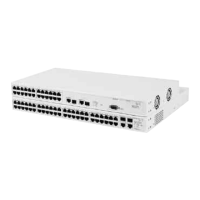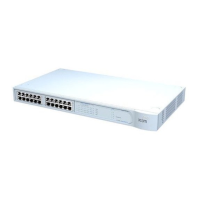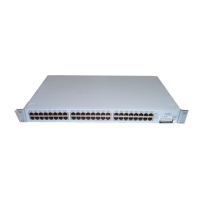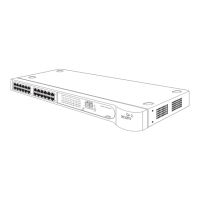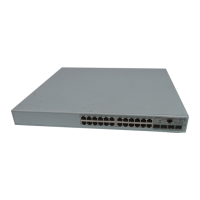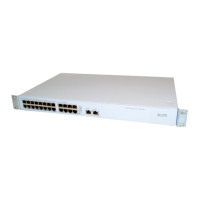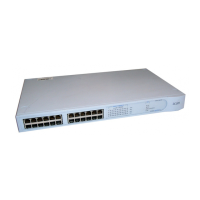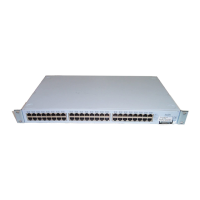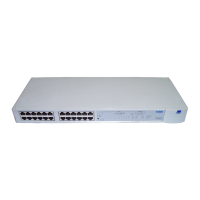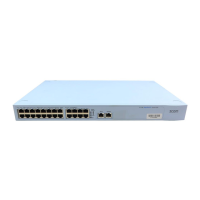How STP Works 39
■ Each port to have a cost. This specifies the efficiency of each link,
usually determined by the bandwidth of the link — the higher the
cost, the less efficient the link. Table 3
shows the default port costs for
a Switch.
Tab le 3 Default port costs
STP Calculation The first stage in the STP process is the calculation stage. During this
stage, each bridge on the network transmits BPDUs that allow the system
to work out:
■ The identity of the bridge that is to be the Root Bridge. The Root
Bridge is the central reference point from which the network is
configured.
■ The Root Path Costs for each bridge — that is, the cost of the paths
from each bridge to the Root Bridge.
■ The identity of the port on each bridge that is to be the Root Port.
The Root Port is the one that is connected to the Root Bridge using
the most efficient path, that is, the one that has the lowest Root
Path Cost. Note that the Root Bridge does not have a Root Port.
■ The identity of the bridge that is to be the Designated Bridge of
each LAN segment. The Designated Bridge is the one that has the
lowest Root Path Cost from that segment. Note that if several
bridges have the same Root Path Cost, the one with the lowest
Bridge Identifier becomes the Designated Bridge.
All traffic destined to pass in the direction of the Root Bridge flows
through the Designated Bridge. The port on this bridge that connects
to the segment is called the Designated Bridge Port.
STP Configuration After all the bridges on the network have agreed on the identity of the
Root Bridge, and have established the other relevant parameters, each
Port Speed Link Type
Path Cost 802.1D,
1998 Edition
Path Cost
802.1w-2001
10 Mbps Half Duplex
Full Duplex
Aggregated Link
100
95
90
2,000,000
1,999,999
1,000,000
100 Mbps Half Duplex
Full Duplex
Aggregated Link
19
18
15
200,000
199,999
100,000
1000 Mbps Full Duplex
Aggregated Link
4
3
20,000
10,000
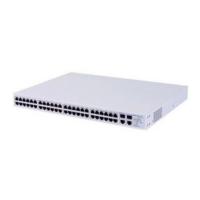
